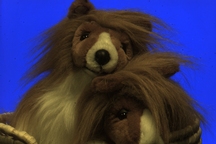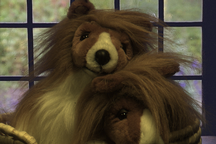
As you can see, while it looks pretty good, there is a lot of flickering going on. (At least part of it is because I am using just a hand-held lamp and the flash from my camera (Canon PowerShot SD450). Unfortunately, even with a good, bright, multi-point light source and the camera set to full manual, there is still some flickering. This example is just the worst.) This not only makes the picture look bad, there is no way to really optimize it. (Even at 120x160, it is over 430K! Ideally, the first frame should be the only one that needs to show the background.)
I've spent hours searching the forums and the web, but couldn't find an answer to my dilemma. There just doesn't seem to be a way to 'normalize' a series of images that I could find, either here, or in the documentation. The colours all seem fine; it's just the brightness that is out of whack. Is there any way of fixing this? (If I was just doing one or two, I would just do it by hand, but I'm helping my mother-in-law do hundreds, so it has to be automated.)
As I am the one taking the pictures, I could easily enough put a card with black/50% grey/white sections at the bottom of each picture. Is there a way to tell IM to use the levels at a particular location in the picture to adjust the brightness of the whole image?



